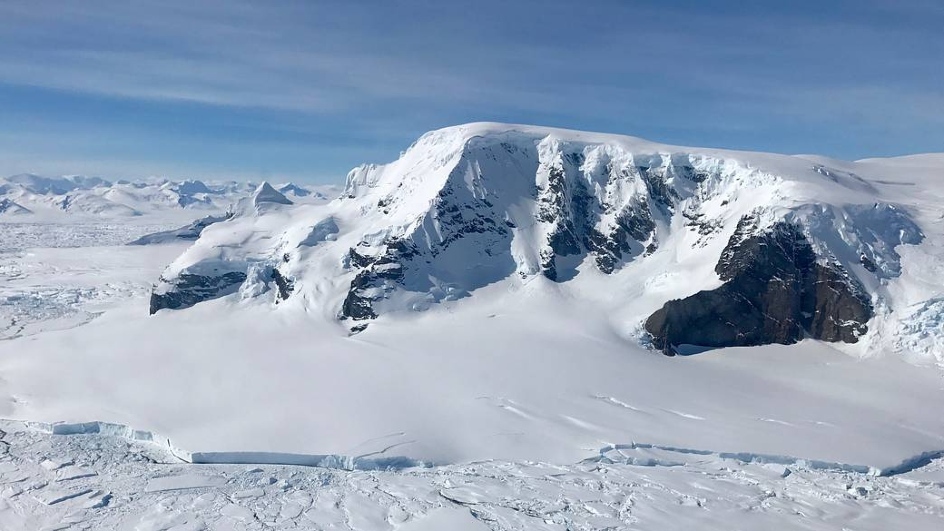Study Estimates Global Ice Loss of 28 Gigatonnes Since 1994; #Arctic Worst-Hit - by @MrigDixit
weather.com/en-IN/india/en…
(Image credit: NASA/Joe MacGregor)
weather.com/en-IN/india/en…
(Image credit: NASA/Joe MacGregor)

Melting and refreezing of ice around the globe is an annual natural phenomenon, but owing to the gradual rise in global average temperature, the cycle is no longer marked by just the seasonal variability.
#ClimateChange
#ClimateChange
Over the last few decades, the accelerated irreversible melting has been a prime indicator of #globalwarming and is posing a massive threat to the entire world in the form of rising sea-levels.
#ClimateChange
#ClimateChange
A recent study has estimated that #Earth, in whole, lost a staggering 28 trillion tonnes of ice between 1994 and 2017. The study, still under review and discussion, comes from researchers from the University of Leeds, University of Edinburgh and University College of London.
Another recent study had revealed last week that Greenland broke the all-time record annual ice-loss in 2019. With a loss of massive 532 million tonnes in one year, 2019 broke the previous record set of 2012 by 15%.
The current study shows that the #Greenland ice sheet has lost around 3.8 trillion tonnes of ice within 23 years.
Ice loss across the globe
As per the current study, between 1994 - 2017, the ice loss among the various parts of the world is estimated to be: the Arctic sea ice (7.6 trillion tonnes), Antarctic ice shelves (6.5 trillion tonnes) and ice sheets (2.5 trillion tonnes)...
(📸:NOAA)
As per the current study, between 1994 - 2017, the ice loss among the various parts of the world is estimated to be: the Arctic sea ice (7.6 trillion tonnes), Antarctic ice shelves (6.5 trillion tonnes) and ice sheets (2.5 trillion tonnes)...
(📸:NOAA)

... mountain glaciers (6.2 trillion tonnes), and Southern Ocean sea ice (0.9 trillion tonnes).
#ClimateAction #ClimateEmergency #ClimateChange
#ClimateAction #ClimateEmergency #ClimateChange
The data was combined using satellite observations and numerical models. Moreover, the study added, about 60% of the ice loss was from the northern hemisphere, while the remainder of 40% was recorded from the southern hemisphere.
After, examining these prime hotspots, scientists have warned that the melting of glaciers and ice sheets can possibly increase sea level by nearly a metre (3 feet) by the end of the century.
#ClimateAction #ClimateEmergency #ClimateChange
#ClimateAction #ClimateEmergency #ClimateChange
As per the study, the surface temperature has increased by 0.85°C since 1880—the result of it has been reflected in the rise of both sea and atmospheric temperature thus triggering a massive reduction in the ice cover of the world.
#ClimateAction #ClimateEmergency
#ClimateAction #ClimateEmergency
The study concluded that all the aforementioned areas have witnessed significant ice reduction in the last three decades and the trend is likely to continue.
Therefore, the latest findings corroborate that it’s the need of the hour to minimise on greenhouse emissions—the prime factor for the increase in global temperatures.
#ClimateAction #ClimateEmergency #ClimateChange
(Image: Antarctica Landscape)
(Image credit: NOAA)
#ClimateAction #ClimateEmergency #ClimateChange
(Image: Antarctica Landscape)
(Image credit: NOAA)

Cascading impacts on the #Earth system
For the current study, scientists studied planet poles, mountains, and glaciers using data from various satellites to estimate the amount of ice lost.
For the current study, scientists studied planet poles, mountains, and glaciers using data from various satellites to estimate the amount of ice lost.
The study is rare in nature as it analysed the loss of ice in the entire planet, whereas most of the studies till now focused on ice melting in particular regions like #Antarctica, #Arctic, #Himalayas or #Greenland.
#ClimateAction #ClimateEmergency #ClimateChange
#ClimateAction #ClimateEmergency #ClimateChange
Experts attribute rising global temperatures as the primary cause of such massive ice loss, which can impact millions of people living in the coastal parts of the world.
Apart from the sea-level rise, the melting of ice has direct implications on Earth as well as it enhances the solar radiation absorption.
#ClimateAction #ClimateEmergency #ClimateChange
#ClimateAction #ClimateEmergency #ClimateChange
#SeaIce plays a role in reflecting back about half of the incoming radiation from the Sun. Once the soil or sea is exposed to direct sunlight they tend to absorb much higher heat content as compared to the ice-covered land, eventually increasing the warming of the planet.
Moreover, melting ice in #Antarctica and #Arctic can lead to ecological imbalance, thus impacting the biological health of the glacier ecosystems.
Experts state the results of the study reveal a worst-case scenario prediction laid down by the United Nations Intergovernmental Panel on Climate Change (IPCC) several years ago.
• • •
Missing some Tweet in this thread? You can try to
force a refresh














